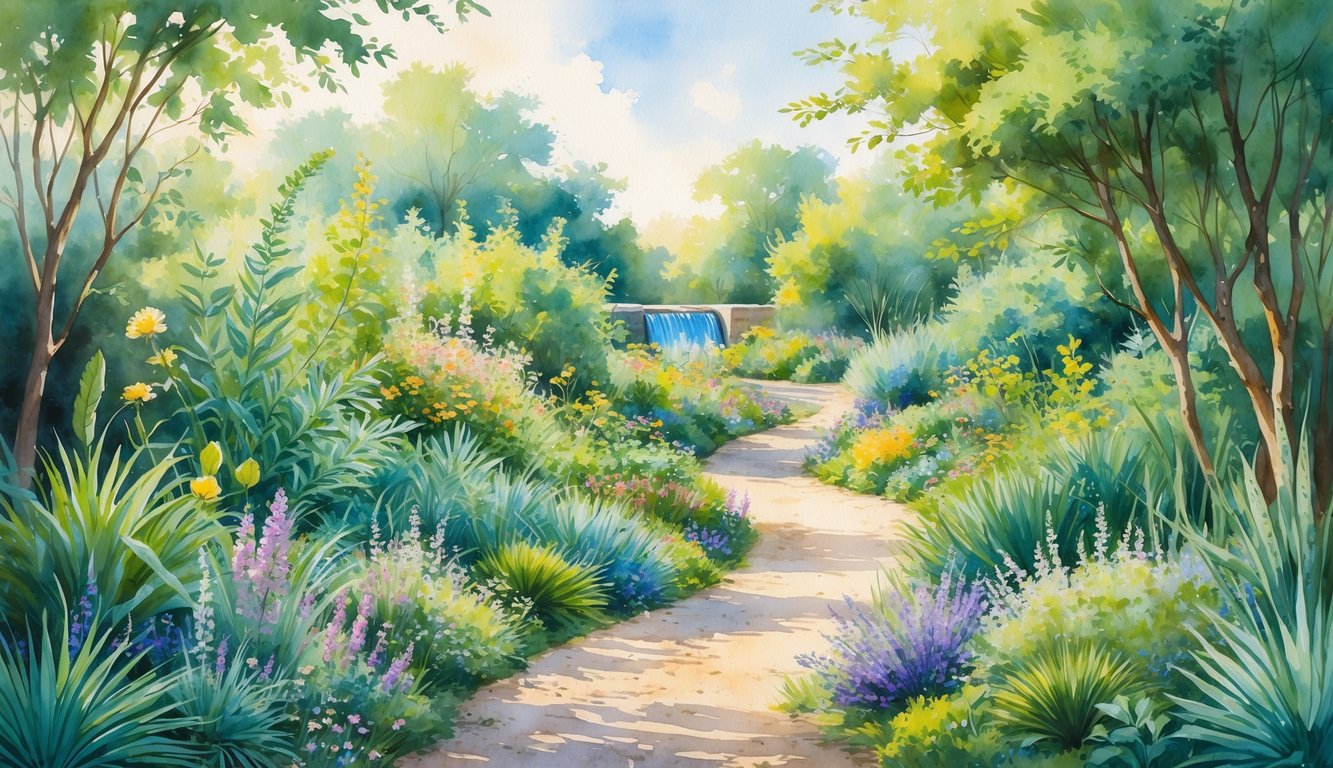
Frequently Asked Questions
If someone promises “magical” water savings with native plants, run. There’s always some hidden soaker hose. Local advice and those boring soil tests are the only things that ever work, and if you think there’s a universal garden for Illinois, you haven’t argued with a prairie restorationist about sedges yet.
Where can I find a comprehensive guide for Illinois native plants?
Honestly, Google’s a black hole. You’ll end up on dead forums or, if you’re lucky, the University of Illinois Extension’s PDFs—these things are thicker than a deep dish pizza and somehow always jam my printer. National sites like Direct Native Plants explain shipping, but then you find out half the “natives” are from Indiana. Shrug.
People hand me laminated guides at plant sales and vanish before I can ask if Culver’s root survives in clay. If you think identifying native plants is intuitive, you’re either a wizard or lying.
Could you suggest a garden plan that maximizes water savings with Illinois native plants?
Rain garden diagrams? Most look like spaghetti. The stuff that matters: root depth, hydrozones, “group by thirst”—you’ll only get those details from Midwestern conservationists who know way too much about soil moisture. I can’t count how many times I’ve misread “full sun” and ended up with droopy prairie dropseed. Savanna mixes, hand-mulched with leaf litter, cut irrigation needs in half (so says the last extension study I skimmed).
Nobody warns you about mosquitoes if you dig too deep. My only real advice: mix early-blooming forbs with deep-rooted grasses and toss your sprinkler. Your neighbors will think you’ve quit mowing—until July, when their lawns crisp up and yours is smugly green.
Which nurseries specialize in native plants near Chicago?
Skip the big chains. In Chicago, everyone rushes Prairie Nursery on Mother’s Day, then complains when Baptisia sells out in an hour. Lurvey, Red Stem, North Branch—each one tries to out-weird the others with milkweed varieties. The Garden for Wildlife online shop lets you shop by zip code, which honestly beats fighting people in person.
Don’t expect labels to help. I once bought “goldenrod” that was, uh, not goldenrod. Some places have staff who’ll give you a taxonomy lecture whether you want it or not, so bring snacks if you’re in a hurry.
What are the top native Illinois plants recommended for supporting local pollinators?
Everyone says purple coneflower is the answer. Bees disagree—leafcutters don’t care. Prairie blazing star, wild bergamot, milkweed? Every Master Gardener swears by them. Xerces Society (and my own failed bee counts) say it’s not about the plant, it’s about the bloom sequence. If you don’t stagger blooms, you’ll watch June bees starve while July explodes with flowers.
Cup plant gets hyped but grows like a mutant sunflower. Try controlling that. Jacob’s ladder looks cute, but loses every drought battle. Stats? U of I says diverse plantings get 70% more pollinator visits than monocultures. My advice: plant at least two things you can’t pronounce.
What are the common native plant communities found in Illinois?
“Native Illinois”—what does that even mean? Black soil prairie, sand prairie, wetland, savanna, or that wind tunnel by Lake Michigan? I spent a summer pretending I could tell “mesic tallgrass prairie” from “dry-mesic.” Spoiler: both burn fast when lightning hits. Extension offices still bicker about swales—don’t get sucked in.
Someone always talks up forest understory layers, then forgets woodland phlox is rabbit food by July. Personally, my garden’s “former cornfield, soggy in spring, concrete in August,” but USDA zones demand fancier names.
When is the ideal season to establish native plants in my garden for better water conservation?
Okay, so everyone swears by late fall—like, “That’s when seeds want frost!” Sure, maybe seeds have preferences now? Every time I ask some ecology professor, they give me this look like I’m supposed to just know. Tried spring seeding once. Regret. Maple seedlings everywhere, and I’m crawling around yanking them out for weeks. My weirdest success? I shoved some Baptisia plugs in the ground in September, gave them a splash of water, and then just crossed my fingers for rain. Didn’t even check on them, honestly. Somehow, those things survived way better than anything I babied after July heat waves. What’s that about?
Seed catalogs keep insisting, “Spring is best!”—yeah, right, until July hits and everything looks like it’s melting in real time. Soil temp, roots, rain… it’s all a mess. Who actually wants to drag a hose across a prairie in August? No one. Or maybe they do, but they’re not telling the truth.